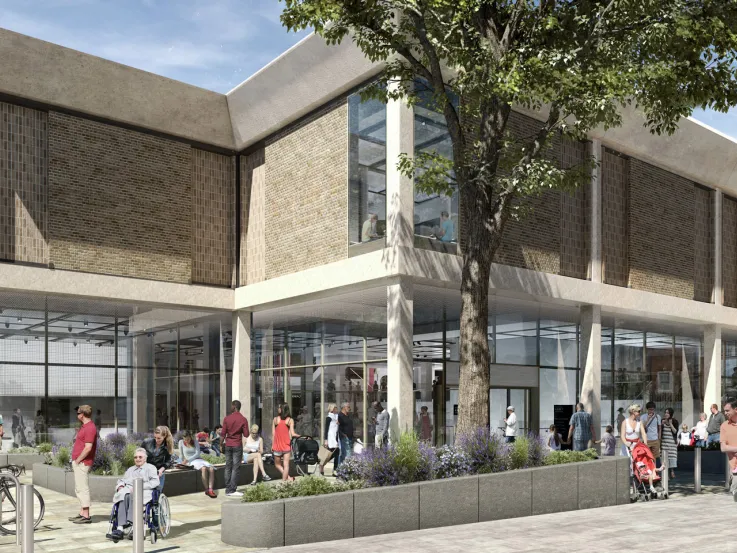War Paint: Brushes with Conflict
On 30 March 2017 the new National Army Museum will open to the public with its first temporary exhibition, War Paint: Brushes with Conflict. Over 130 paintings and objects explore the complex relationship between war and the men and women who map, record, celebrate and document it.
Many aspects of conflict lead to the creation of art. Soldiers and civilians record locations, report news or commemorate important events. Maps and sketches have a strategic role, documenting contested land, asserting power or controlling resources. But every image is a deeply personal perspective on war’s lasting impact on landscapes and people.
This fascinating exhibition explores the nuanced and ever-changing relationship between art, conflict and the truth. From the 17th century, patriotic modern history paintings promoted a thrilling image of Britain’s role in world affairs, helping people at home to visualise a powerful global empire. By the 19th century, domestic audiences were fascinated by romanticised images of epic battles, but the triumphs they saw on canvas were often deliberately false depictions of rather more inglorious events.
But when public tastes change, so does art. The Crimean War was widely reported in newspapers and magazines and avidly followed by an increasingly literate and politically aware public. The Illustrated London News published nearly 1,000 illustrations of the war, many of which were critical of the conditions endured by soldiers.
In the early 20th century, the depiction of conflicts was still seen as a political and patriotic gesture, with the British War Propaganda Bureau employing artists during the First World War. Muirhead Bone (Tanks) specialised in black and white sketches that could be easily reproduced for propaganda purposes and sold in aid of the war effort. When Britain went to war again in 1939, the War Artists’ Advisory Committee was established within the Ministry of Information. During both these conflicts artists were expected to paint as a demonstration of patriotism. Their work was seen as ‘war service’, vital to maintaining public morale and promoting the country’s cultural values.
War Paint shows how art’s reach has often extended beyond propaganda and into documentation and even subversion. Though the Official War Art Scheme was set up during the First World War for propaganda purposes, it soon widened its scope to commemorate how war impacts on lives and landscapes. It was one of the largest and most comprehensive official arts’ patronage schemes ever devised.
Some artists have used their work to criticise conflict and subvert official opinion. Today, few artists are commissioned to celebrate military victories, and triumphalism feels distasteful. Gerald Laing is a celebrated pop artist who became one of the most powerful anti-war painters of his time. His passionately felt stance against the Iraq War (Repetition, 2004-5) and the policy adopted by the West towards the Middle East were fuelled by his own experiences as a soldier.
As well as controlling or reflecting public opinion, war art has essential strategic functions; understanding territory is vital if governments or armies are to control it. Napoleon Bonaparte saw mapping’s military value and ordered the first detailed maps of Egypt (Fairburn's New Chart Exhibiting the Route of General Buonaparte). The growth of the British Empire highlighted the importance of planning the movement of goods and armies, and of assessing the value of land. In 1833 a School of Military Survey was set up to train army engineers in surveying, sketching and mapping. This was the origin of the Ordnance Survey maps that we still rely on for location information today.
Many of these maps were painted by soldiers on the ground, and soldiering and art have always had unexpected connections. Before the 1840s and the development of the illustrated press, serving officers produced nearly all the eyewitness pictures of the British Army on campaign. These were often made public in exhibitions or printed reproductions. Prints like The Glorious Conquest of Buenos Ayres by the British Forces were the primary way that the public encountered and consumed images of conflict.
Like all art, military paintings have an agenda and art exerts a powerful influence on our memory and imagination. But though war art makes strong statements, its political message isn’t always subject to rigorous analysis. Today, with the appeal of truth for modern audiences, artists are keenly aware of their contribution to the memory of war.
In the age of photography, video footage, rolling news coverage and social media, what do we need from war art today?
Notes for editors
For more information, please contact the National Army Museum press office at pr@nam.ac.uk or 020 7881 2433.
National Army Museum
The National Army Museum is the leading authority on the history of the British Army. Founded in 1960 by Royal Charter and established for the purpose of collecting, preserving and exhibiting objects and records relating to the Land Forces of the British Crown it is a museum that moves, inspires, challenges, educates and entertains. The museum seeks to tell the story of the British Army, the personal experiences of the soldiers who have served in it and to connect the British public and it’s army demonstrating how the role of the army and its actions are still relevant today.


